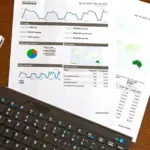Amazon is the largest online marketplace in the world and has long since ceased to be an insider tip when it comes to selling products online. In Germany alone, there are over 18 million Amazon Prime customers who regularly pay to have their orders delivered faster. Therefore, it makes perfect sense to sell products on Amazon. The customer base is huge, and so is the purchasing power.
But selling on Amazon has to be well planned and implemented because the customers have to be able to find your offer. The Amazon search algorithm is constantly being revised, so your listings need to be adjusted and maintained to appear ahead of your competitors.
There are different ways to sell successfully on Amazon. This blog post addresses what you should pay attention to and what different options there are.
Let´s Go!
Amazon SEO: this is how the ranking works.
When you think of search engine optimization (SEO), you usually think of Google. But even those who want to sell successfully on Amazon should deal with how a search and ranking algorithm works and how it is optimized. The task of the algorithm is to filter out the articles that match the customer’s search query from an overall offer. The algorithm therefore decides which product is displayed at which rank in the search results.
Amazon SEO helps you optimize your product pages in terms of keywords so that customers can find them much more easily. The goal of search optimization at Amazon is to present the visitor with exactly the right search result with as few clicks as possible.
Search engine optimization first involves a detailed keyword analysis, which is about finding out what your customers are looking for and then using these search terms in your articles.
Amazon SEO: Relevance Factors
Now we want to go into more detail about the individual factors by which the Amazon ranking is determined.
The relevance factors determine whether your product is listed for a search query at all (in whatever position). The relevance factors are checked first after a search query and primarily measure how well your product matches the search query.
These factors are as follows (the order of these factors reflects their weight):
- The most important ranking factor on Amazon has always been the product title. After all, the title decides whether a customer clicks on the product to view more information. Titles that are short and meaningful are ideal. On the one hand, the most important keywords for the search query should appear here; on the other hand, product titles that are too long reduce the CTR (click-through rate), since they become less meaningful the longer they become. Here, you should find the optimal middle ground.
- Product images: As the only optical connection, the images are also very important for successful optimization. These should be high-resolution (min. 1000 x 1000 pixels) so that the zoom function can be activated. It should also be ensured that the pictures are detailed and meaningful. For example, if bad light renders a colour incorrectly, this can increase the return rate. So this is an indirect ranking factor.
- Bullet Points: These are the bullet points you see at the top of your product description. Five bullet points have proven to be optimal. The bullet points describe your product in note form and are more important than the product description, as these are almost always read due to their prominent position and the fact that information is obtained quickly. An interesting bullet point can thus be the trigger for the purchase of your product or for leaving your product page.
- Keywords: The keywords are not visible to visitors to your product page (frontend), but are only entered in Seller Central (backend). The Amazon algorithm also accesses these. At this point, it is advisable to also specify synonyms for your product that should not be directly visible to visitors to your product page.
- Product Information: This is further down the product page but before the product description. Essentially, further figures, data, and facts about the product, such as technical details or quantities, are given here. These are aimed more at the visitors to your product page and less at the Amazon algorithm.
- Product description: The product description should also address the visitor to your product page rather than the Amazon algorithm. In order to read this text, the visitor has to scroll far down. Here, your product should be described in an interesting and stimulating way to buy, including the most relevant keywords. Undecided visitors who have “lost their way” down here should be encouraged to make a purchase again using emotional means.
If you want to increase your Amazon visibility and need support, our SEO experts will be happy to help you.
Amazon A+ content: use the scope on Amazon in a goal-oriented manner.
A+ Content provides businesses with a premium content feature, allowing for headline formatting, the inclusion of additional photos or graphics, and bulleted lists, allowing you to make your product descriptions more appealing and drive more sales. However, not everyone has access to A+ Content. In order to take advantage of the additional visual content, sellers must have registered their brand with Amazon. Alternatively, participants in an Amazon-managed sales programme, such as Launchpad or Amazon Exclusives, automatically have access to A+ Content.
The A+ content gives you more scope to present your products well and make your brand better known. You can choose between different designs. There is often space at the top for your logo or that of your brand. You should also use this space to make yourself and your brand known. Even if the visitor just keeps scrolling, the logo will stick in their mind.
Within the design, you can design the product page with different content types. Care should be taken to adapt your product pages in a sales-promoting manner and to the latest sales-psychological findings so that you can use the additional content profitably.
A+ Content has the potential to increase sales by 3–10%.. In summary, adding more images and text can bring the following benefits:
- Higher conversion rate: the additional text and images help customers better understand the products.
- Lower return rates and a better understanding of products also mean that customers can make better-informed purchasing decisions. This makes returns less likely.
- Better Reviews: More information and better purchasing decisions lead to happier customers who leave positive reviews.
Amazon PPC: success with Amazon advertising
The advertising opportunities on Amazon are varied and promising. Sellers have various display options for advertising in the Amazon product search. The various campaign types follow the pay-per-click principle, as in Google Ads. Costs are only incurred here when a customer clicks on an ad. The price per click depends on the product’s popularity and competition. Accordingly, prices can fluctuate greatly. However, not all keywords are always relevant; it is also important to regularly check the success of the measures. Amazon advertising makes sense but can also quickly burn through the advertising budget.
There are four essential adjusting screws to increase the success of your products:
Structuring of the Amazon PPC campaigns
- Structure campaigns consistently according to the same system.
- Use meaningful names for naming the campaigns to better find your way around your own advertising account.
- Group products that are searched for with the same keywords into ad groups.
- Use different ad groups for keywords with different levels of generality; the larger the assortment, the more keywords with different levels of generality there will be for the products.
Selection of keywords
- Optimizing the keyword set of your pay-per-click campaign: choosing the right keywords is extremely important for the success of Amazon ads.
Using irrelevant keywords for your product will waste money, as the ads will be shown to customers who are looking for completely different products.
For example, if you bid on the keyword “everyday shoes” with an Amazon PPC ad for hiking boots, it is rather unlikely that a purchase will result. On the other hand, if you forget an important, relevant keyword, sales will be lost.
Selection of products
- This is about using the traffic efficiently and continuously selecting products. Different products require different strategies, even if they appear under the same keywords. Therefore, we recommend: Don’t add multiple products to an ad group. Poorly performing products usually have a negative impact on the CTR (click-through rate), which is measured at the ad group level. In this way, products that are running well are quickly affected. It is therefore better to only insert a few or only one product per ad group. Some even go so far as to store an ad group with only one article per campaign. The maintenance is very intensive, but this gives you the opportunity to advertise each article as individually as possible.
Determination of the CPC bids
- Costs down, sales up: Optimizing the CPC bid The CPC bid can be used to control which search results page an ad appears on and, thus, how many clicks it gets. The amount of the bid also determines whether a campaign is profitable or not. A higher bid generally leads to more impressions, clicks, and thus sales.
The goal of CPC optimization is therefore to find out at what point a desired ratio of expenses to sales (expenses/sales = cost of sales) is achieved.
Conclusion
In this blog post, we have listed the options for successfully selling on Amazon and what you should pay attention to. Of course, your Amazon strategy must be tailored to your goals and needs. However, the options listed (Amazon SEO, Amazon PPC, etc.) should not be considered individually but rather as a “joint interaction”.
No matter how you sell, we are happy to support you in successfully displaying your items on Amazon while you can fully concentrate on your day-to-day business.





